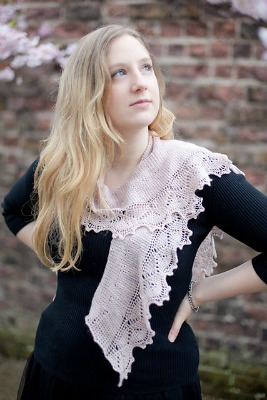I’m delighted to share an interview with Aoibhe Ni today. She’s a crochet designer from Ireland who has done some lovely Tunisian crochet designs. You can find Aoibhe Ni online on her website, her blog,Twitter, YouTube, and Ravelry (as flick, in her fan group, and on her designer page). Photographs are by Half a Dream Away and are used with Aoibhe’s Ni’s permission.
This post contains affiliate links.
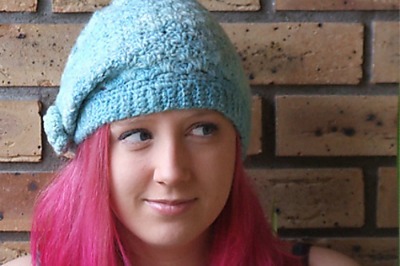
Underground Crafter (UC): How did you first get started crocheting and Tunisian crocheting?
Aoibhe Ni: I started crocheting when I was 12 or so. My Mam taught me how to make granny-square blankets out of scraps. It took a few years for me to really get into it, but when I did, I started to look for as much information as I could on the craft. At the time, we had no internet at all, so I had to resort to the library in Dublin city centre, and the small selection of Irish Crochet Lace books they had.
Needless to say, it was a huge leap from knowing how to treble crochet, to getting the hang of pattern reading, making lace doilies, and free-form Irish Crochet lace, but along the way I had a lot of fun.

UC: What inspired you to start designing?
Aoibhe Ni: I always designed, mostly due to a lack of pattern resources out in the “wilds” of Co. Meath farming land. Most of what I produced early on was useless for the purposes intended. I designed a bag, once, using treble crochets, and decided I didn’t need to line it. Half-way into town, I discovered I had lost half the bag’s contents. A cheap lesson well-learnt, I will tell you! (UC comment: I think we’ve all had similar “a ha” moments with our early designs!)

UC: Much of your design work uses Tunisian crochet. What appeals to you about this technique?
Aoibhe Ni: Both the versatility and the restrictions appeal, actually.
I find, in many ways, traditional crochet is too open for me to gather much inspiration. I find that a few, well-placed restrictions make all the difference with a design. They help focus my thoughts, help me invent new ways around any hurdles I encounter, turning them into advantages along the way. I’d much rather paint a picture with three colours than with a whole palette, and that’s what Tunisian gives me, with its straight lines, and fairly uniform stitch-height.
Within that, I get to play and invent and experiment. What you see in the finished pieces is only a fraction of the things I have tried out along the way.
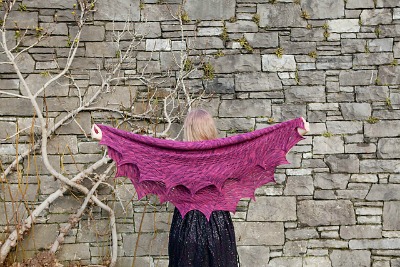
UC: Your work is primarily self-published. Can you talk about your decision to focus on self-publishing rather than on designing for other publishers?
Aoibhe Ni: I have worked with a few magazines, and intend to keep collaborating with a range of people in the coming years, but it’s true, I do, primarily self-publish.
In the beginning it was out of necessity. With a market full of rookie designers, getting noticed can be difficult. The only way to prove myself, I found, was to self-publish and hope for the best. If I was good enough, and lucky enough, I’d get noticed.
Now, I do it because I am an impatient designer. I like getting ideas out there as fast as possible, letting people see what I’m doing, get a design to crocheters lickety split. When you work with a publisher, that process can take months, or years. I understand the need for the delay, but I’m not a fan of the waiting time. (UC comment: The waiting time is tough, I agree – especially when you have a design you are very excited about.)
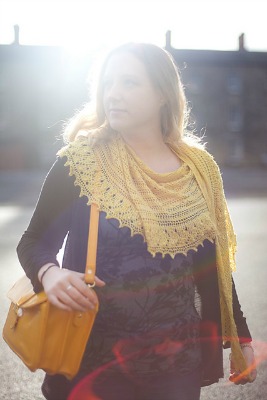
UC: Tell us about your Legendary Shawls collection and your inspiration for developing it.
Aoibhe Ni: My inspiration came directly from some of my close, knitting friends. We’d often meet up, and I’d spend half the Stitch’n’Bitch session pining over their gorgeous knitted lace. “It’s easy”, they’d insist, “You just have to knit”. Now, while I DO knit, and I respect it greatly, my first love has always been crochet, so whenever they’d explain how to make a lacey section, or a create a nupp, I’d imagine it on a crochet hook and try to understand from that perspective. One morning I woke up and had a genuine “Eureka!” moment, and the techniques I have created for Legendary Shawls were born.
I use well-known knitted lace techniques, turn them on their heads and create unique, crochet fabric. I’m pleased that the technique also opens up a wide range of hand-dyed yarns for the crocheter who hates colour-pooling as the technique also helps reduce that problem a lot.
UC: Your patterns use both U.S. and U.K. crochet terminology. What do you see as the advantages and challenges of offering patterns this way?
Aoibhe Ni: I think, because crochet is a relatively young craft, certainly when compared to knitting and weaving anyway, that we haven’t found a common ground with our terminology just yet. As a result, I think it’s absolutely necessary to provide a pattern that is easy and enjoyable for everyone to read at their leisure. I believe there is nothing worse than paying good money for a pattern, and then having to struggle, so I do all I can to avoid that for my customers, and make my patterns as clear, enjoyable and regional as I can. I even have my free shawl pattern, Pax, translated into French!
I write first in UK terminology, because that is what comes more naturally to me having learnt those terms as I grew up, but I have little difficulty now, after some experience, translating back and forth at will. I think many beginners see the difference in terms as a huge stumbling block, but with more designers providing patterns in both UK and US, I think this issue will become less of a problem in the future.
And who knows, maybe some day we’ll all agree to a common set of terms and all this will be consigned to the history books!
UC: What are your favorite crochet books in your collection?
Aoibhe Ni: I actually have very few, would you believe? As I mentioned, I grew up with few crochet resources to hand, and no local book or wool shops to help me out, so most of my finished pieces early on were out of my head, and that early practise has stayed with me. I do love The Technique of Irish Crochet Lace by Ena Maidens, and I can’t recommend Crochet for Babies and Toddlers
by Betty Barnden enough for beginners looking to branch out a little. It is the book I always went back to when friends and relations announced a new arrival.
There are some absolutely amazing books out there full of beautiful crochet that I would love to have time to work my way through, but designing is a full-time job, so I have no time left to enjoy anything created by my peers. Maybe some day!
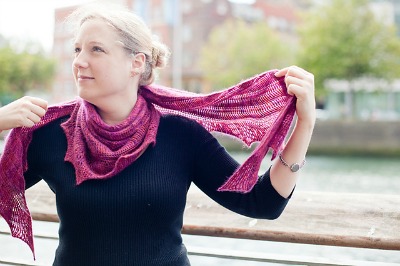
UC: Do you have any crafty websites or blogs you frequent for inspiration or community that you would like to share?
Aoibhe Ni: When I teach my regular beginner’s classes around Dublin, I get asked this a lot, and I always suggest people check out PlanetJune for patterns and Attic24 for inspiration. I’d love to have a cup of tea with either woman. I imagine it’d be a very up-lifting experience.
Beyond that I use music a lot, and I get great inspiration from my Ravelry Group. The members have come up with some wonderful adaptations so far, and seeing my own patterns in different colours and fibres can really spark off an idea. I love their creativity.

UC: What’s your next project?
Aoibhe Ni: My next project will focus on ladieswear. Provisionally called “Legendary Ladies,” I plan to do a small but interesting collection of tops, with a wide range in size. Blouses, t-shirts, shawl-necks, mini-dresses, who knows, yet, but it will surely be a fun year of creating, so watch this space! (UC comment: This sounds like a lot of fun – I’ll be looking out for the collection!)

